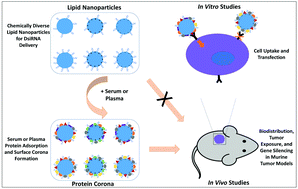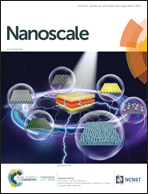The role of apolipoprotein- and vitronectin-enriched protein corona on lipid nanoparticles for in vivo targeted delivery and transfection of oligonucleotides in murine tumor models†
Abstract
The application of lipid-based nanoparticle (LNP) delivery systems remains a popular strategy for the systemic delivery of gene therapies to specific disease targets, including solid tumors. It is now well acknowledged that upon systemic administration, biomolecules from blood will adsorb onto nanoparticles’ surfaces, forming a “protein corona”, affording nanoparticles a “biological identity” on top of their “synthetic identity”. Detailed analysis of nanoparticle protein corona is gradually revealing the “missing link” between nanoparticle chemical properties and the biological identity. Nevertheless, the discovery of nanoparticle protein corona's impact on tumor delivery is limited. In this study, we demonstrate that protein corona can be manipulated by formulation composition and particle surface charge changes, and a single lipid switch could switch the nanoparticle protein corona profile. The protein corona composition differences had a profound impact on cell transfection, in vivo biodistribution as well as tumor-specific delivery efficiency. Nanoparticles with apolipoprotein-rich corona showed better delivery to hepatocellular carcinoma (HepG2) as compared to those with vitronectin-rich corona. In addition, we found that, the PEG conjugated lipid chain length and PEG amount in LNPs were key factors to consider in successful RNA interference therapy for solid tumors.



 Please wait while we load your content...
Please wait while we load your content...